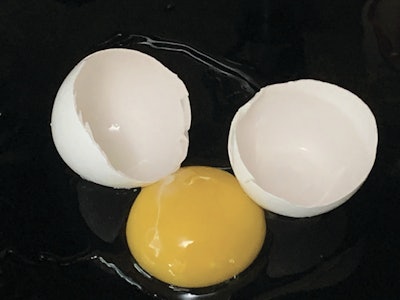
It may cost only a few US$ cents to produce an egg, but it would cost millions to reverse-engineer one, if we ever could. There are so many amazing molecules inside the egg that we are yet to identify, or even understand, be it in their roles in embryo development or in human nutrition.
Eggs are widely recognized as one of the best protein sources for human nutrition. Combining an excellent composition of amino acids, the key building blocks of proteins that must be found in the diet, with outstanding bioavailability. Nature has provided us with the ideal food.
While plant-based products claim to have the same nutritional value as eggs, the statement is only true at the macro level, ie the top level nutritional information found on packaging.
Look closer and…
Plant-based products may offer the same total level of fats and proteins, but the devil is in the detail. The amount of essential amino acids, the breakdown of fats into saturated, monosaturated and polyunsaturated, or the mix of minute amounts of vitamins and minerals (micronutrients), are extremely difficult to replicate. Any attempt to do so leads to a long list of ingredients. Some will be natural, but others are likely to highly processed or synthesized.
Additionally, some egg proteins change over time through various natural reactions, producing small peptides and acquiring new biofunctions that can be quite hard to replicate in a food mixer. The value of eggs is in the detail, where hundreds of molecules interact with one another, in a suitable food matrix.
Over the past 20 years, proteomics, the study of proteins, has made tremendous progress. From about 60 proteins identified in the early 2000s, the publication of the chicken genome, along with the development of mass spectrometry-based high-throughput techniques, have allowed the identification of over 600 proteins inside the egg, including 316 in the yolk, not well known for is protein content.
The egg’s micronutrient content is also extremely hard to replicate using only natural, unprocessed ingredients. We also have the shell, with its rather unique composition, made up of 95% inorganic material, mainly calcium carbonate, within an organic matrix comprising about 500 different proteins. Little wonder that no plant-based product has attempted to replicate the shell!
Nutrition is based on the bioavailability of nutrients, ie their digestion and absorption. To be equal to a real egg, a plant-based product should demonstrate that it not only matches the nutritional content of an egg but also that all its nutrients are bioavailable at the same rate as in a real egg. “In an eggshell”, the egg offers consumers an amazing food that meets their needs in terms of nutritional value, taste, texture, functional properties, and localness of production - and all this with a low environmental impact for an affordable price. Truly, a very tough act to follow for any processed food.
Plant-based products may be able to match eggs’ nutritional value at the macro level and even offer similar functionalities, such as emulsifying, foaming, and gelling. However, matching the minute details of eggs’ nutritional content remains e a hard task.
In a recent study, for example, scientists compared plant-based, imitation meat with the real thing. Their results clearly demonstrated that there were large nutritional differences between these products, and we should expect that the same will be true for eggs.
With no possibility of making poached or sunny side up eggs with plant-based products, it is clear that the egg will be often imitated, but never equaled.

















